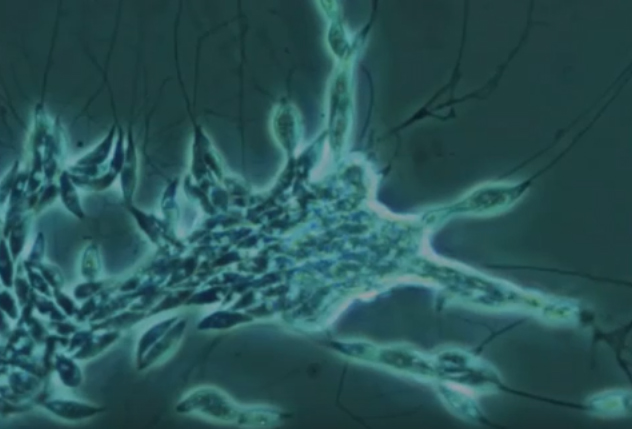by Kristen Minogue

behind seagrass wasting disesase. (Dan Martin/University of South Alabama)
Zebra mussels in the Great Lakes, lionfish in the Atlantic and pythons in the Everglades: Large creatures like these generally draw the spotlight when talking about ways to combat invasive species. But for every visible invader, there are hundreds more too minuscule to see with the naked eye. These species often slip in unnoticed—and unregulated—in the ballast water of large ships.
“There have been reports of parasites being transmitted in ballast water, but most of those have been things that we can easily see,” said Katrina Lohan, a marine biologist with the Smithsonian Environmental Research Center. “So, the parasites that are hanging off the outside of fish.”
Lohan has made it her mission to track the invisible invaders. Some are parasites that can infect humans, plants or other animals. Some can cause toxic algal blooms on the water’s surface. Many are impossible to identify even with a microscope, because single-celled microbes can look eerily (and, for biologists, exasperatingly) similar. And sometimes, a single parasite can take on many different forms throughout its life cycle.
Lohan is conquering these obstacles with DNA. In two of her most recent studies, she and a team of Smithsonian scientists took DNA samples from ballast water tanks of massive cargo ships. Marine vessels are one the most prevalent ways invaders cross the globe, as ships must often discharge microbe-infested ballast water after entering a new port. In a 2016 study, a team from SERC’s Marine Invasions Lab and the National Zoo looked for microscopic protists in ships entering Chesapeake Bay. One year later, in a study published in the June issue of Diversity and Distributions, the same team looked for protistan parasites entering ports on the East, West and Gulf Coasts of the U.S.
They discovered thousands of types of microbes lurking in the ballast water. DNA enabled the biologists to identify most of them to a genus (the level right before species). Some had never been detected in ballast water before, and some didn’t match anything on the books. The four groups in this article are just a few microscopic invaders that bear watching:
